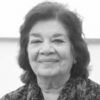Election year fatigue Blame it in part on the race of 1840
Presidential elections are a foundation of American democracy dating back to George Washington. But presidential campaigns, as we know and endure them, came later.
Presidential elections are a foundation of American democracy dating back to George Washington.
But presidential campaigns, as we know and endure them, came later.
In a book published this fall, The Carnival Campaign, author Ronald G. Shafer reflects on the race in 1840 that laid the groundwork for today’s songs and speeches, insults and branding, rumors about health and left us with a catchphrase for the ages, “Tippecanoe and Tyler Too.”
Gone forever were the elections for which candidates stayed home and hesitated even to say they were candidates, Shafer said in an interview.
“Originally, you had to kind of pretend that you weren’t running for president because it was thought that the office sought the man,” Shafer says.
The contenders in 1840 were President Martin Van Buren, a democrat, and Whig Party candidate William Henry Harrison, a War of 1812 hero and, at age 67, the oldest man at that time to seek the White House.
Van Buren, nicknamed “The Little Magician,” was known as a skillful and influential politician and organiser. But the economy was still suffering from the “Panic of 1837” and the President would find himself on the wrong side of an argument few candidates can afford to lose — which one was seen as a “man of the people”
Thanks to a flippant remark by a democratic newspaper that Harrison was better off drinking hard cider in his “log cabin,” the Whigs effectively fashioned their well-to-do nominee as an ordinary citizen and helped make the log cabin a national symbol.
Harrison and running mate John Tyler won easily, but Harrison’s candidacy had a more enduring legacy than his presidency; he fell ill soon after taking office and died in the spring of 1841.
During a recent interview, Shafer discussed the innovations of the 1840 race:
On Harrison, an Ohio native, becoming the first major nominee to give a public speech: “(The Democrats) called him General Mum. They said that he was kept in the cage because they didn’t trust him to talk for himself, and this really upset Harrison.”
“So one day, he got an invitation to come speak at a memorial service at a fort that he had helped defend during the War of 1812, Fort Meigs up near Toledo. So he accepted it ... He did leave his silk hat at home, and he took his farmer’s hat because he wasn't going to mess with the image, and he stopped overnight in Columbus, Ohio right in the middle of town, right in the middle of the state, the capital of Ohio.”
“The next morning, he was leaving to go on his way, and there was a crowd outside. So he started saying a few remarks, and pretty soon, he had launched into a speech.”
“And he went around the state, and it was so unusual that he drew crowds in Dayton and Cincinnati, 100,000 people, which given the population back in those days was quite incredible.”
On the public’s perception of Harrison: “His was the first heavily marketed presidential campaign, and there were all kinds of posters of him as a general, as a middle-aged man. There were even some paintings of him as this man standing against the background of the evening sun, and so when people saw him in person, they were quite shocked in some cases because he was 67 years old.”
“He was graying, a little slow, but once he started, once they saw him, and he started talking, he seemed more lively, and he had a good touch of showmanship, too. He would ride up to the stands sometimes on his white horse and hop off and talk. He would make jokes about people saying, ‘Well, you see, I’m not walking on crutches, and I’m not the old man that you read about in the opposition newspaper.’”
